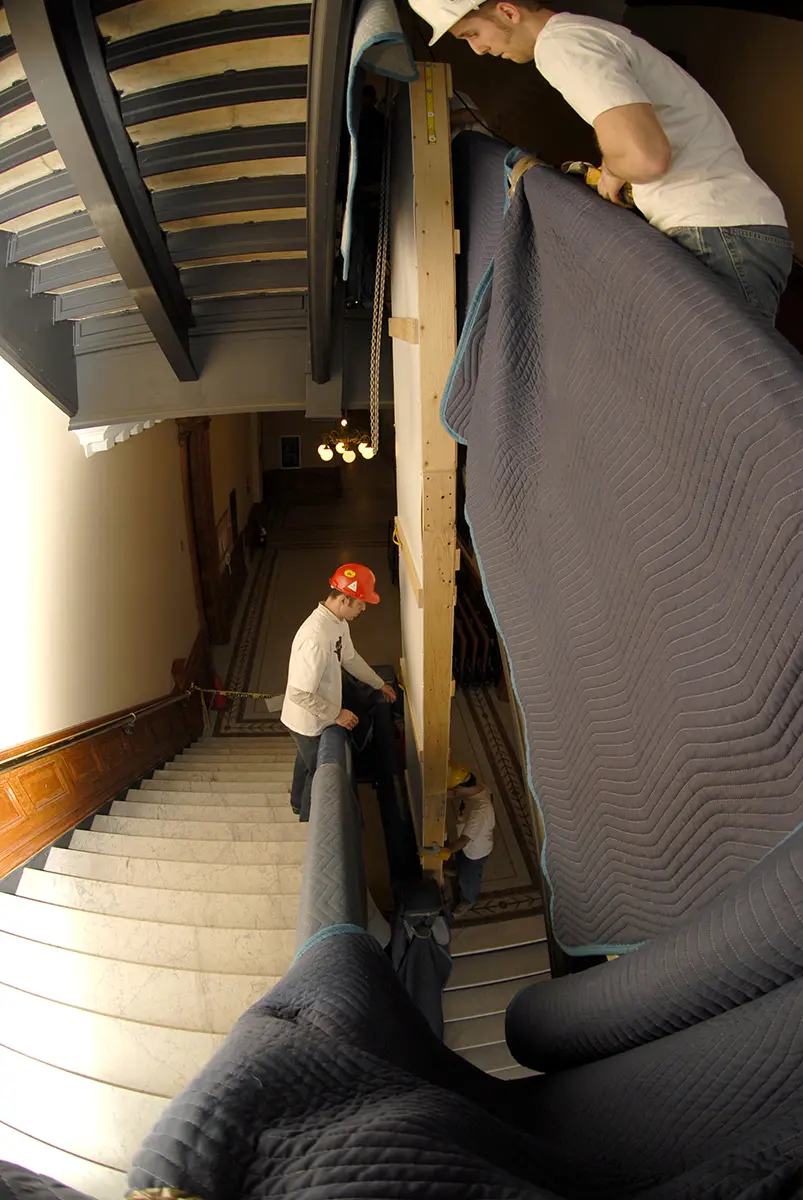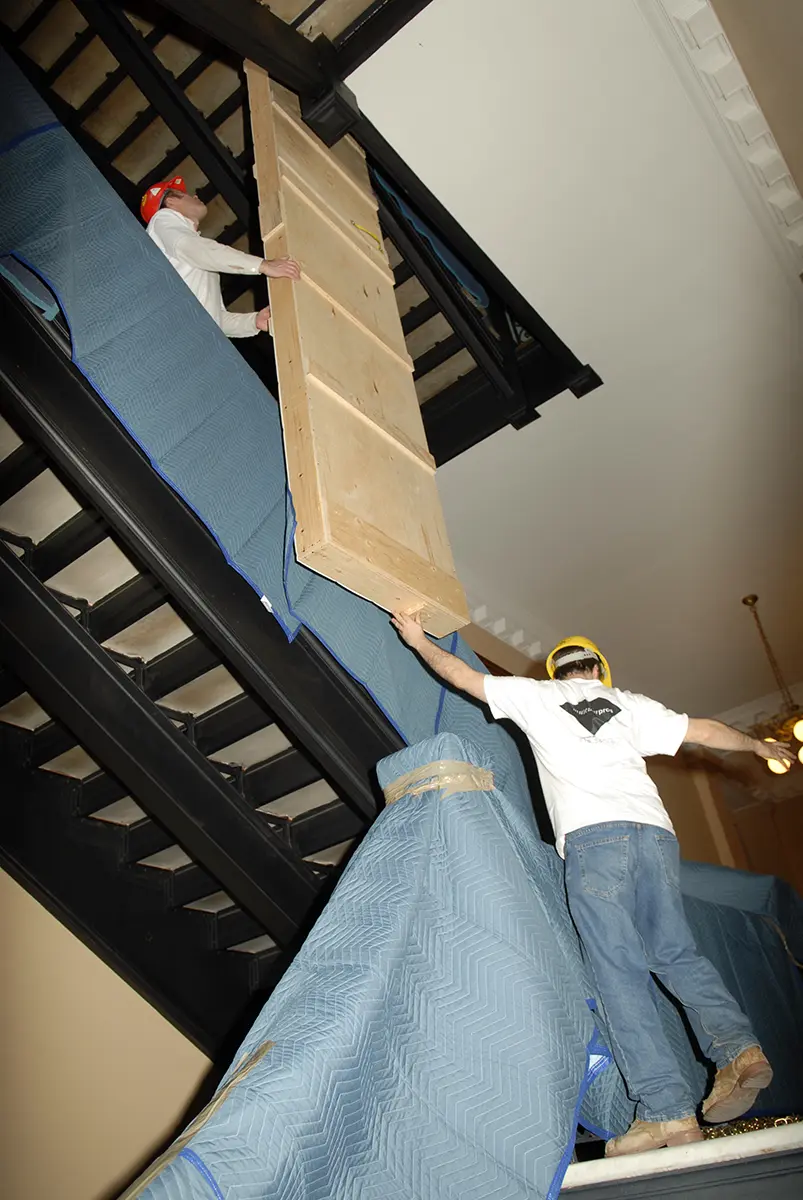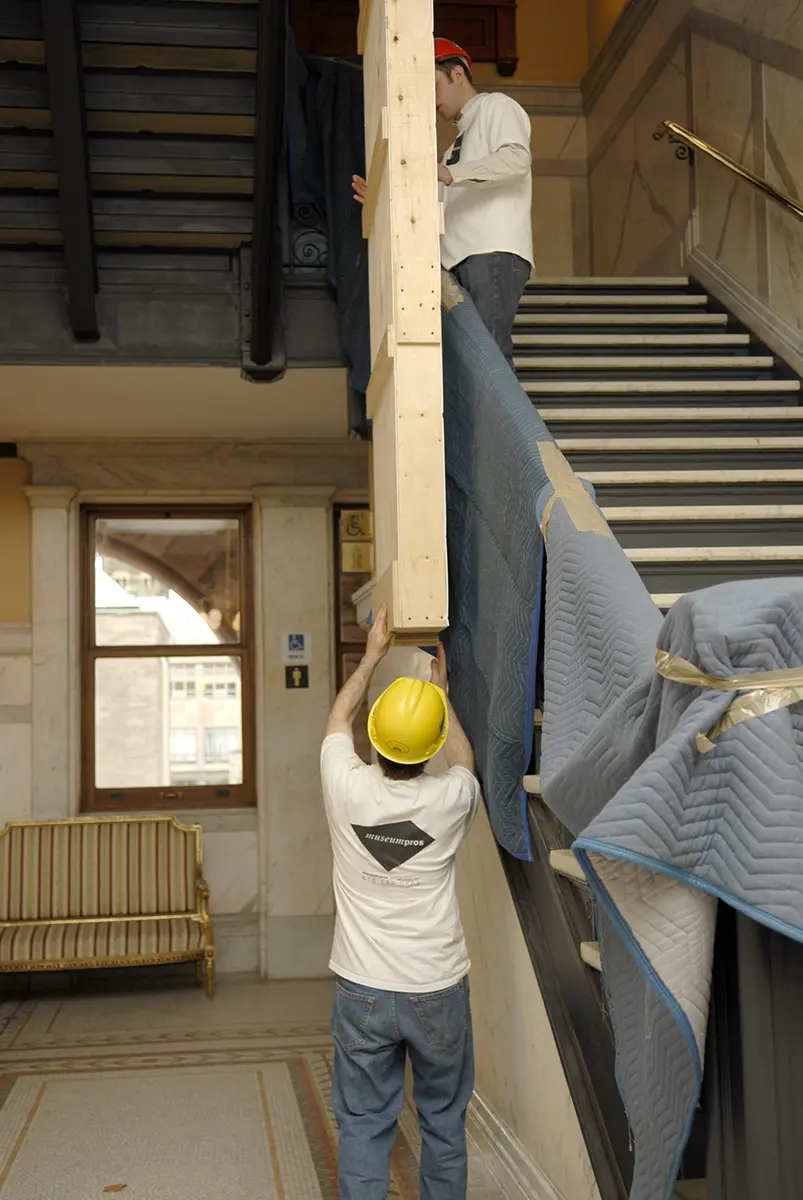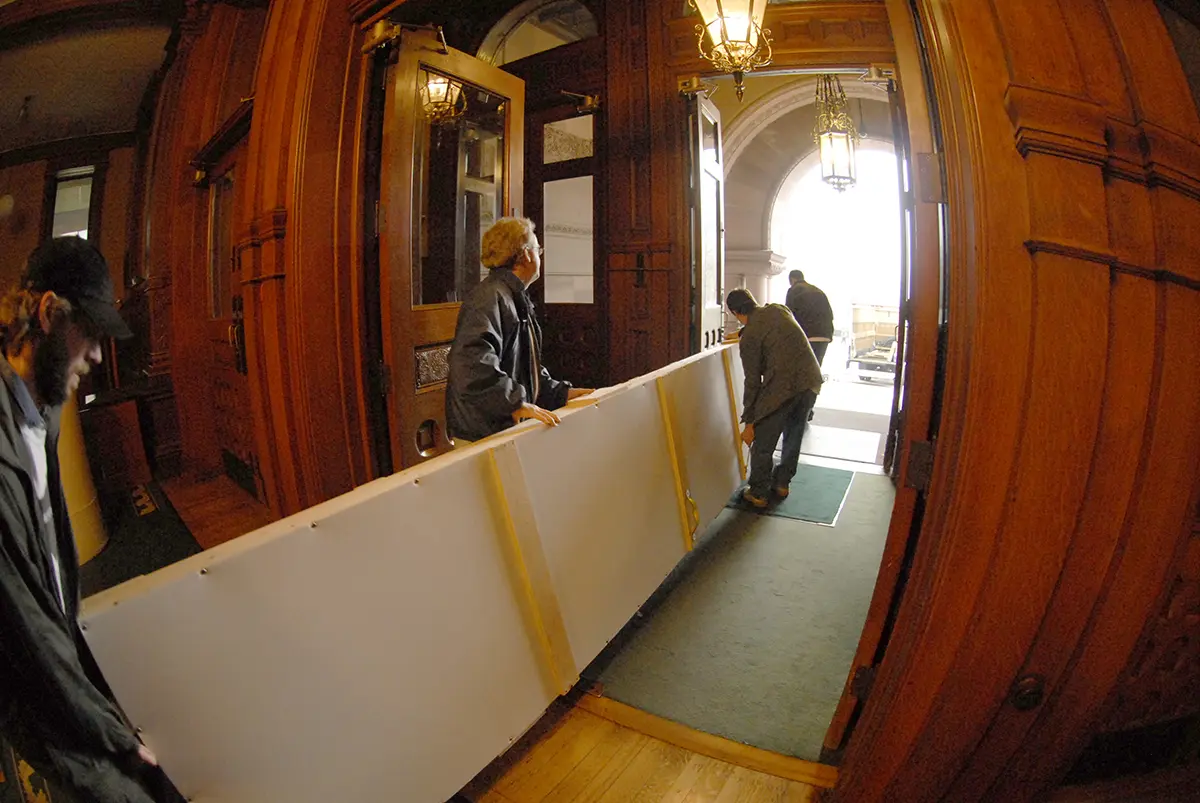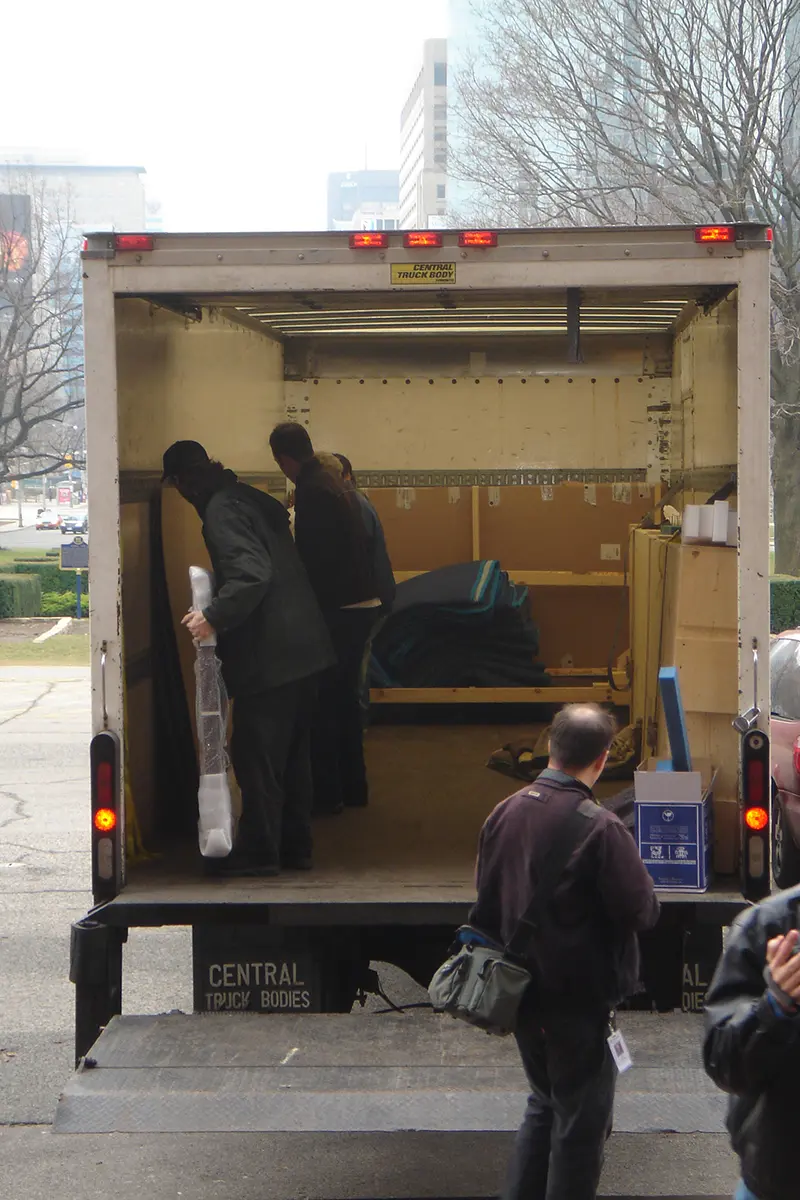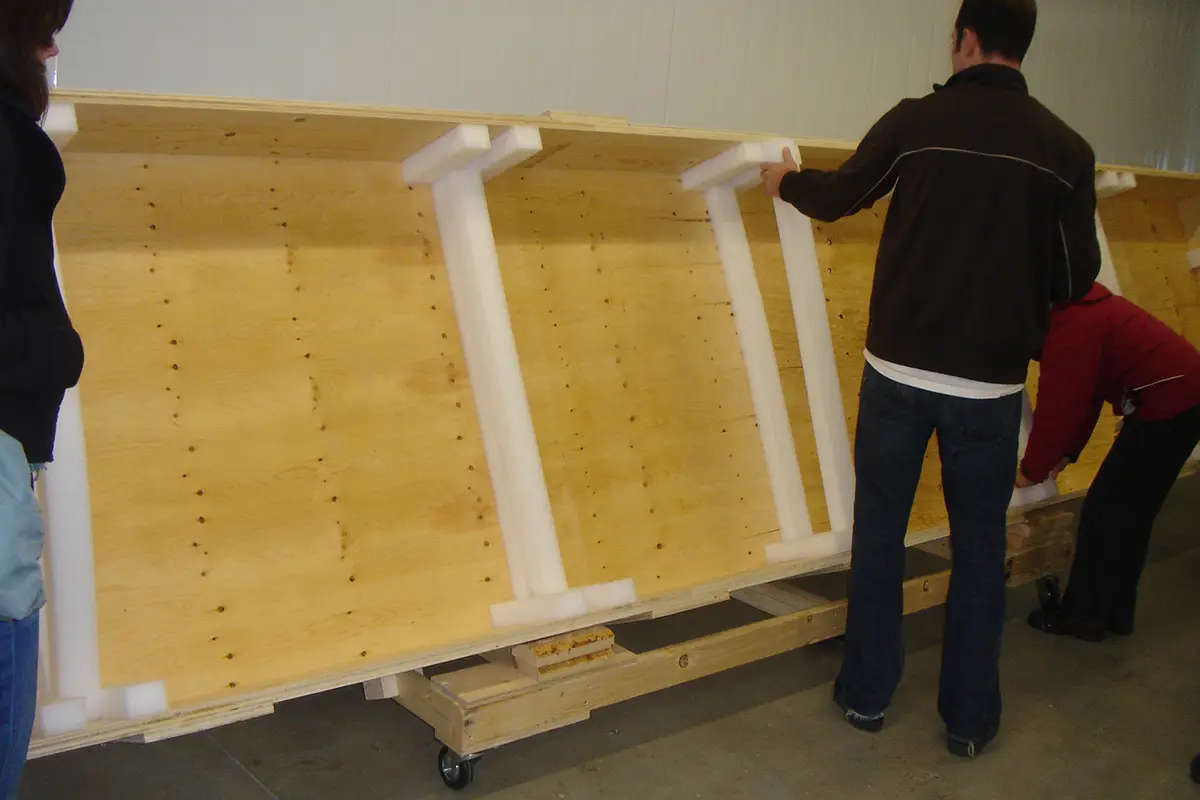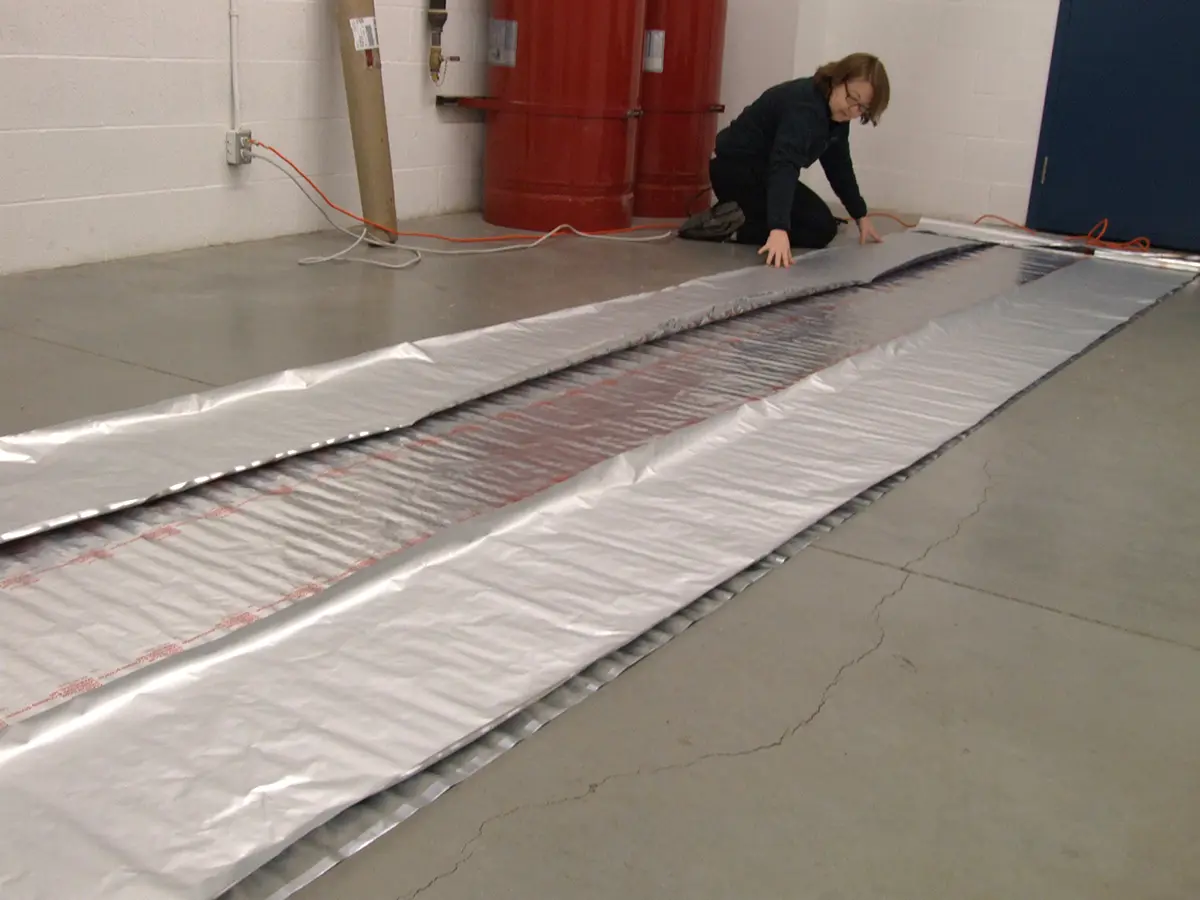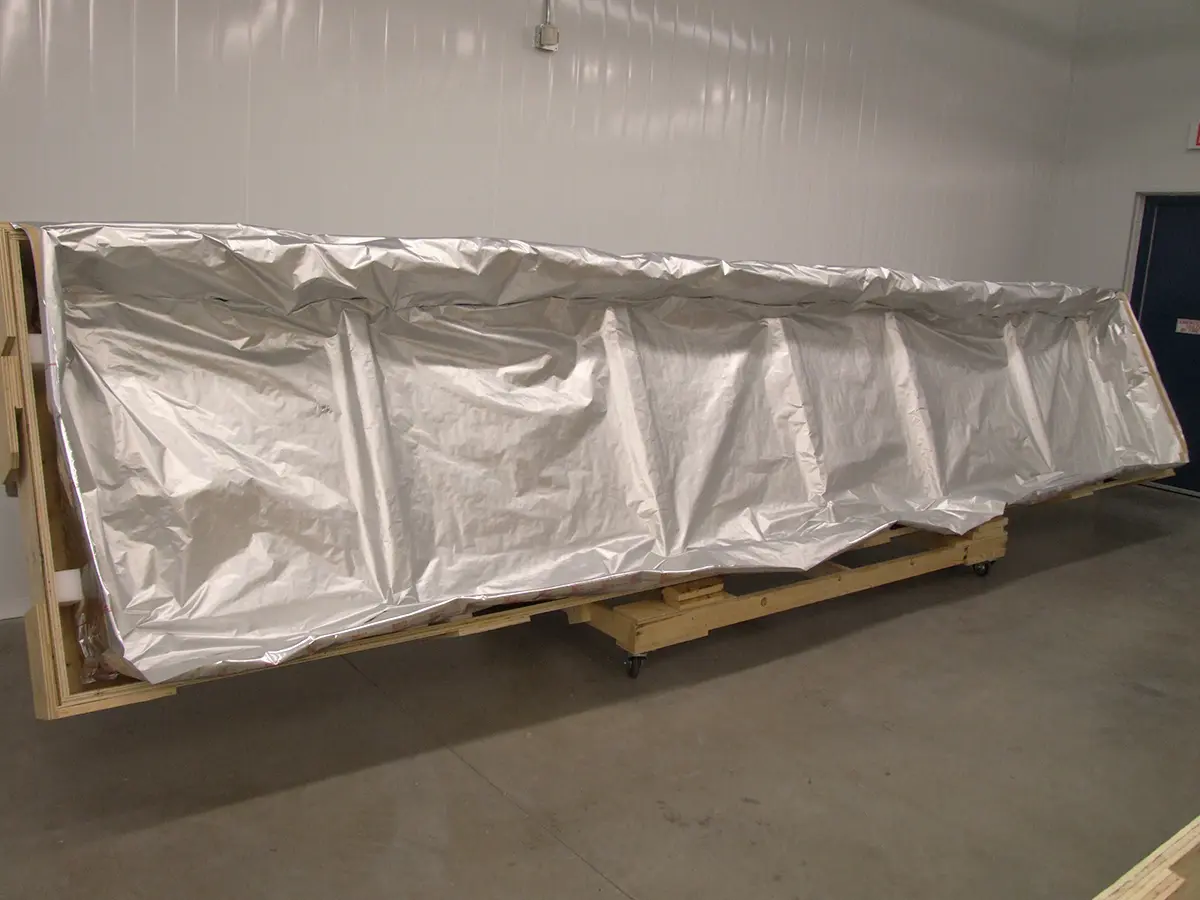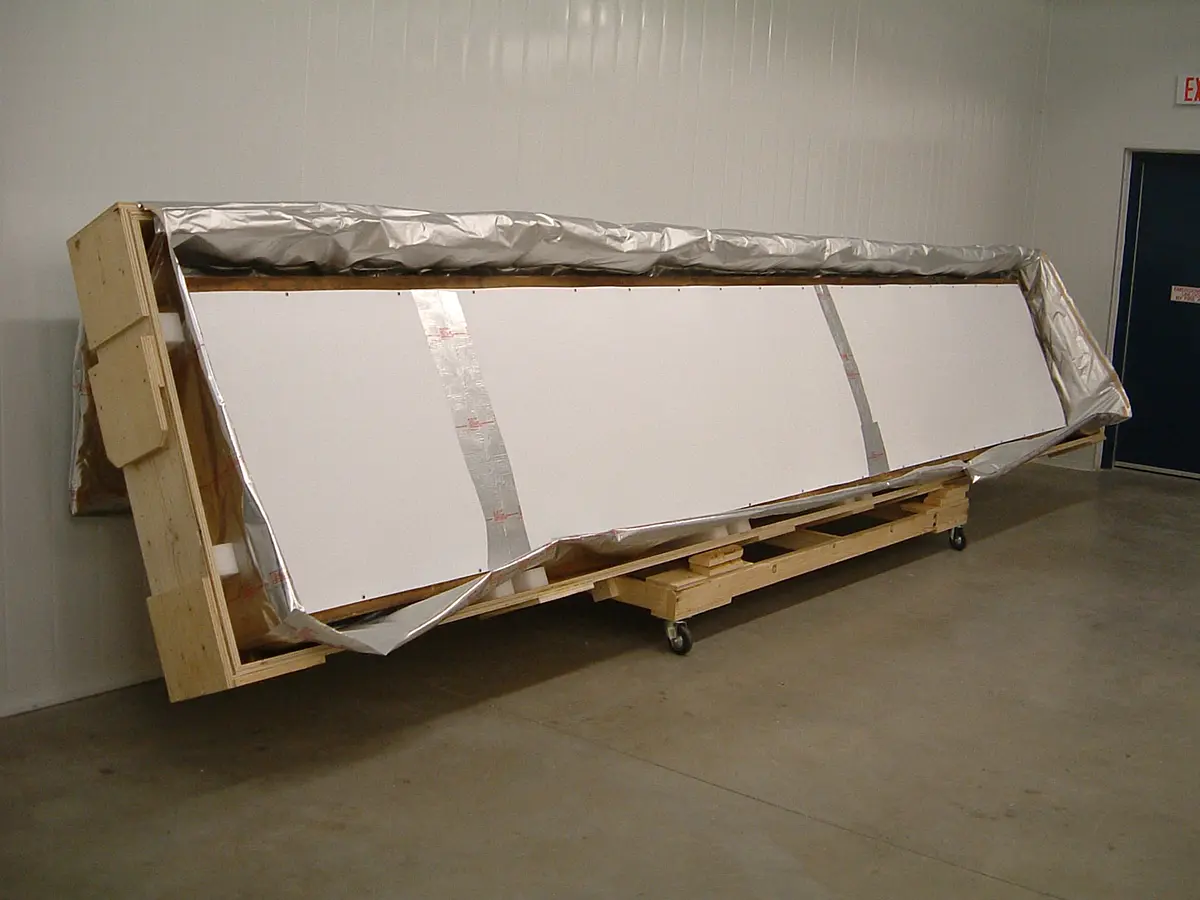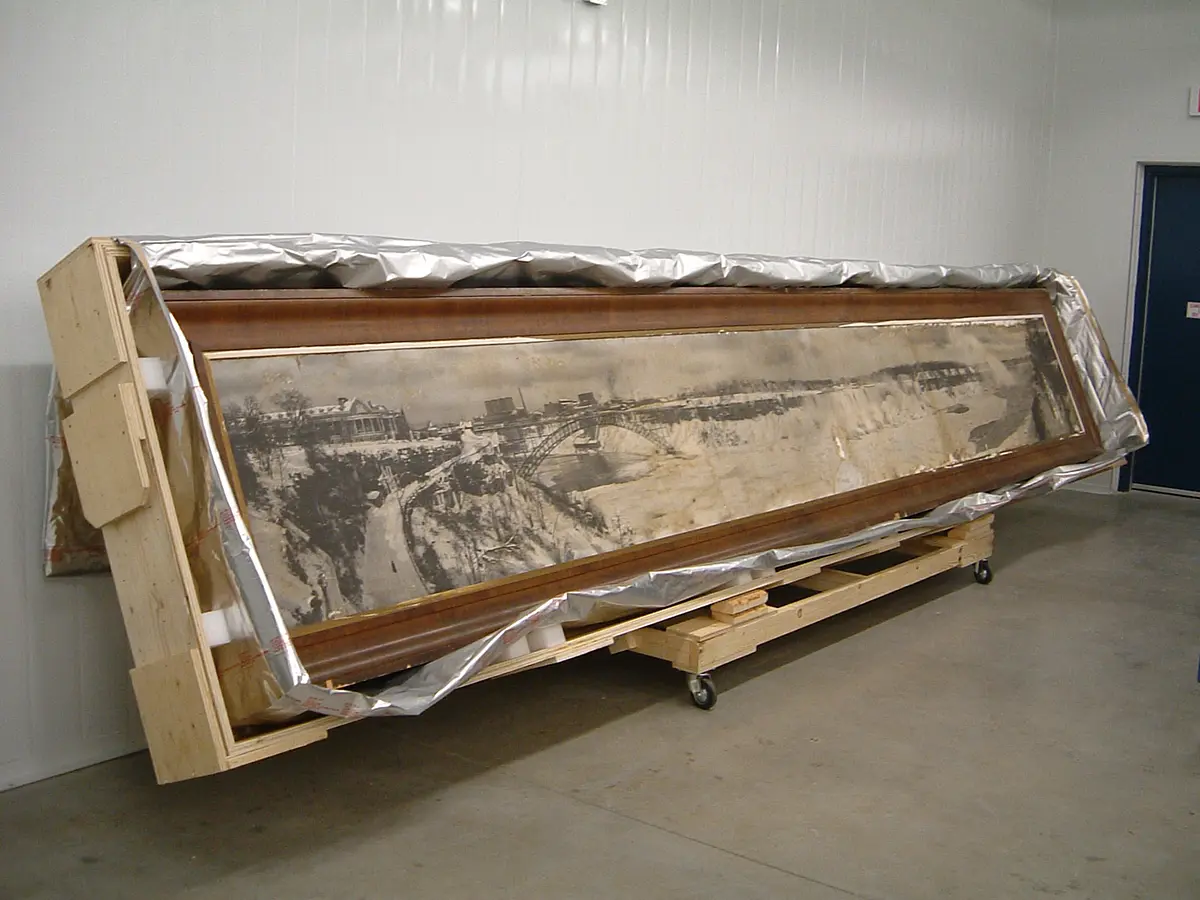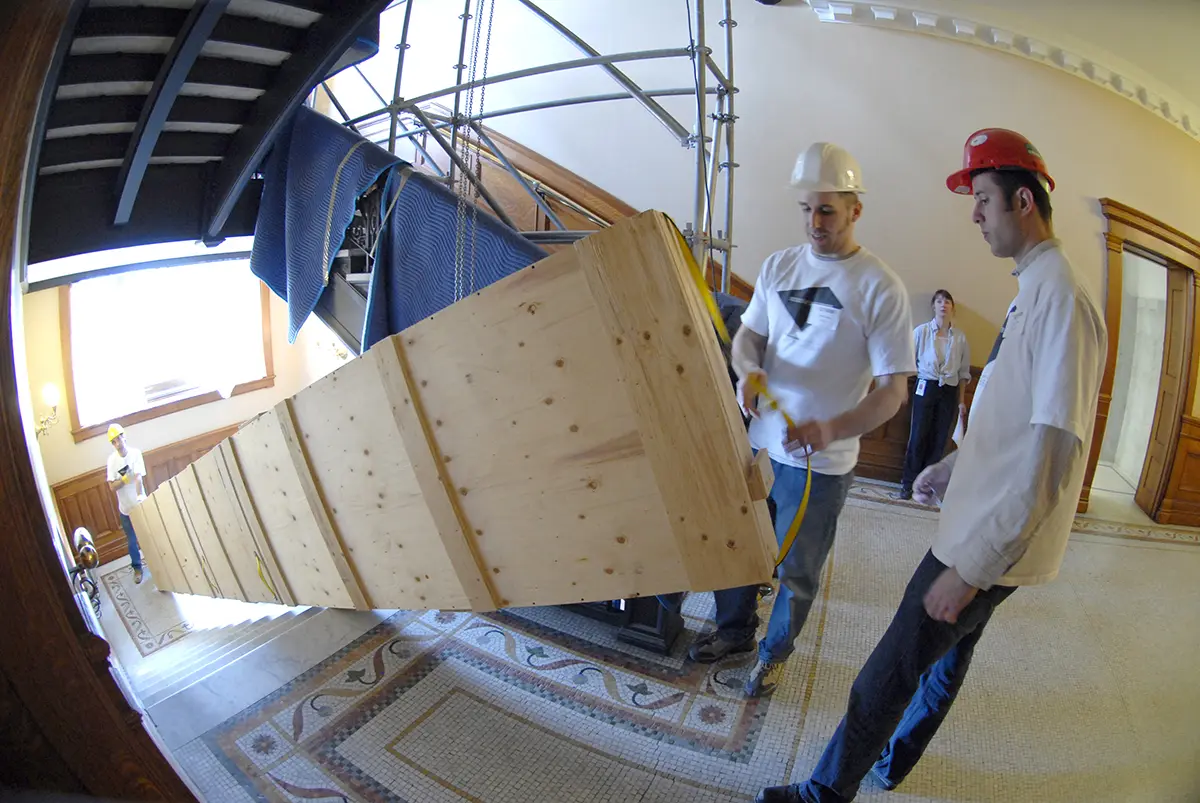
The move
Moving the panoramas from Queen’s Park to the Archives of Ontario’s vaults was no small feat. With many ideas, trial runs and returns to the drawing board, teamwork and detailed planning were keys to the project’s success.
Safely transporting the photographs to their long-term home was extra challenging without the ability to remove their metal backing. The move took place over several days in December 2006 and required a lot of preparation by diverse professionals, including a contract conservator dedicated to the project and a professional art moving company, who helped with planning, designed and built the travel trays and storage crate and moved the massive prints.
The first steps
The process began with a detailed move schedule that involved coordinating with Queen’s Park staff and employees at the Archives’ offsite storage facility. The art movers created custom travelling trays for the panoramas, consisting of a shallow plywood box about 2.5 inches wider than each unframed print. Metal plates attached to the panorama’s wooden support frame secured the photo to the bottom of its box, and a plastic lid protected the print surface from damage. The movers also wrapped the frames in protective materials and transported them separately to lighten each load.
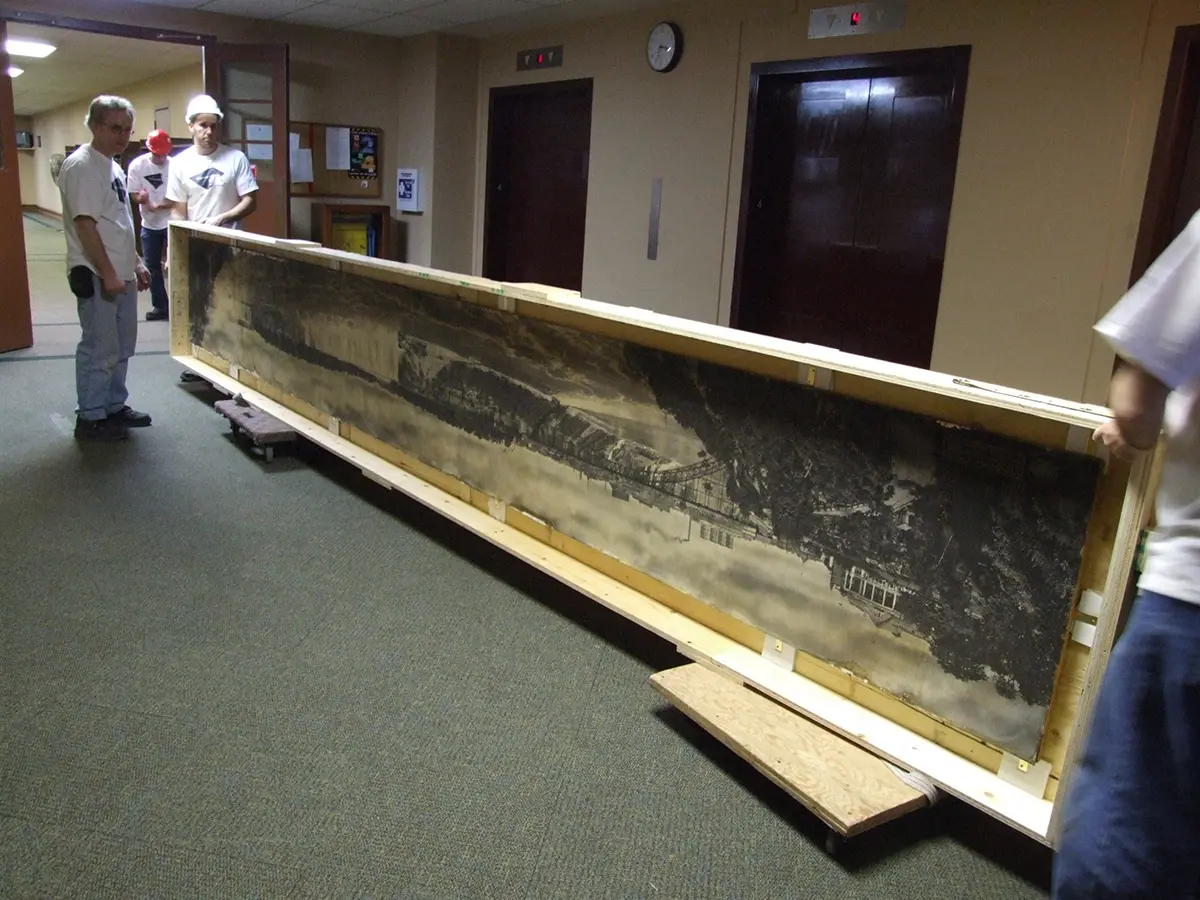
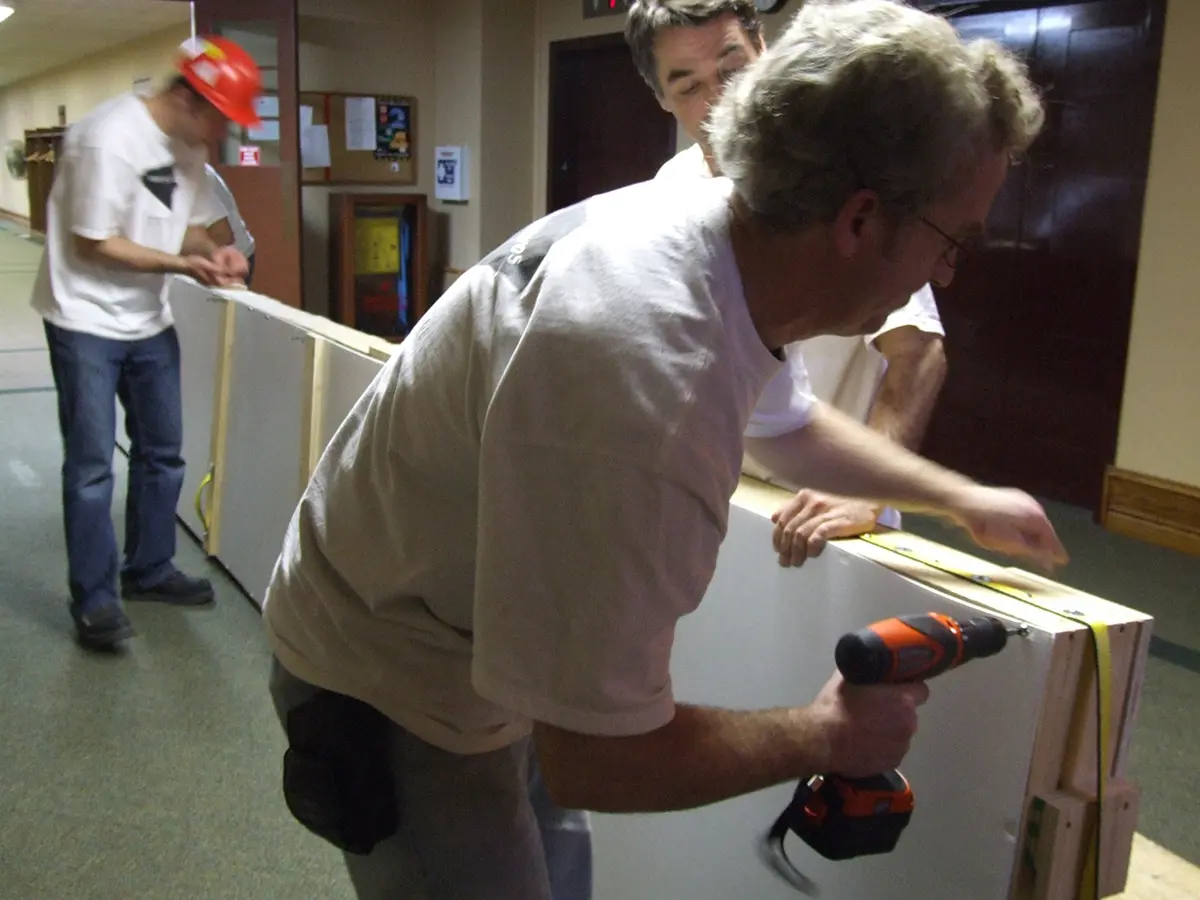
The support system
Scaffolding with an electric hoist, set up in the west-end stairwell of the Ontario Legislative Building, helped the prints journey safely from the makeshift lab on the fourth floor to the moving truck at ground level. Movers hooked the panoramas’ wooden travelling trays to the hoist with straps made of a strong woven material.
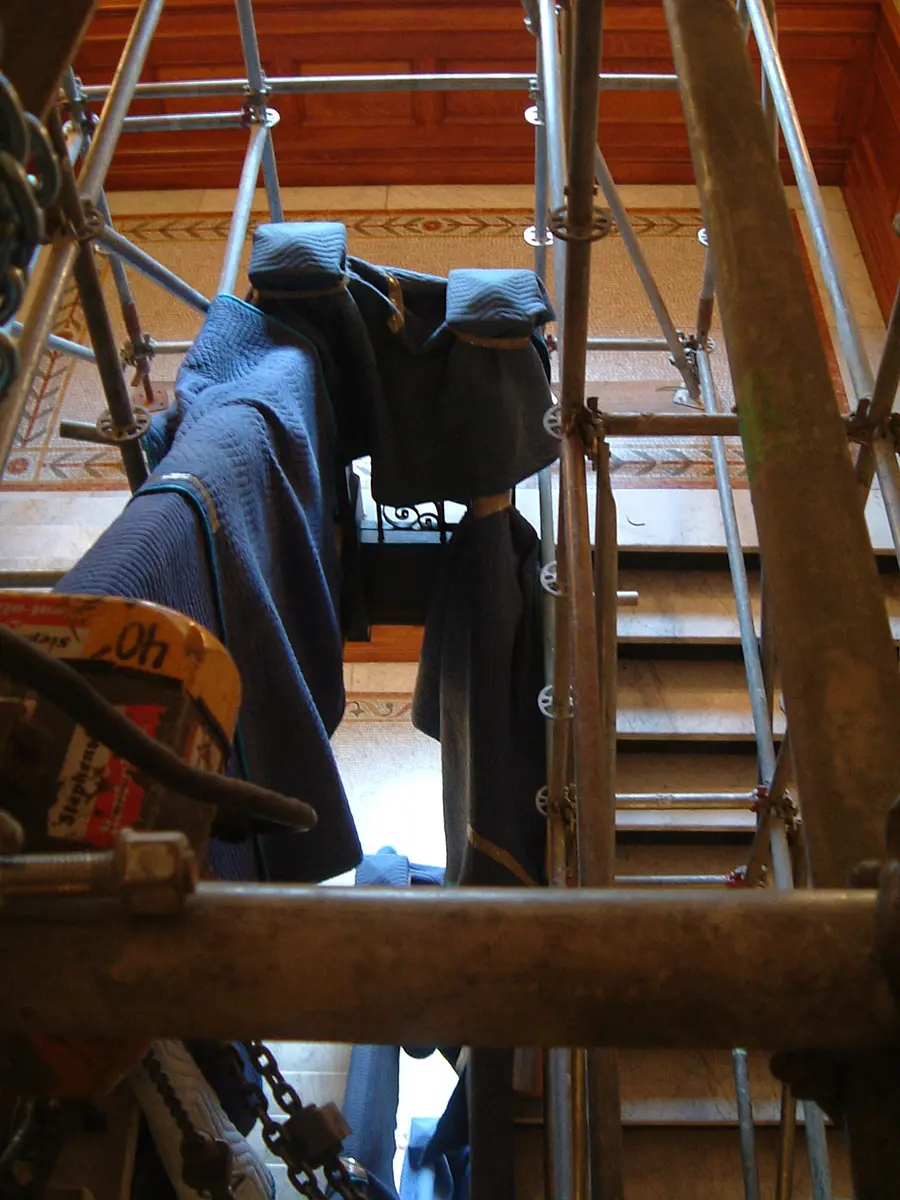
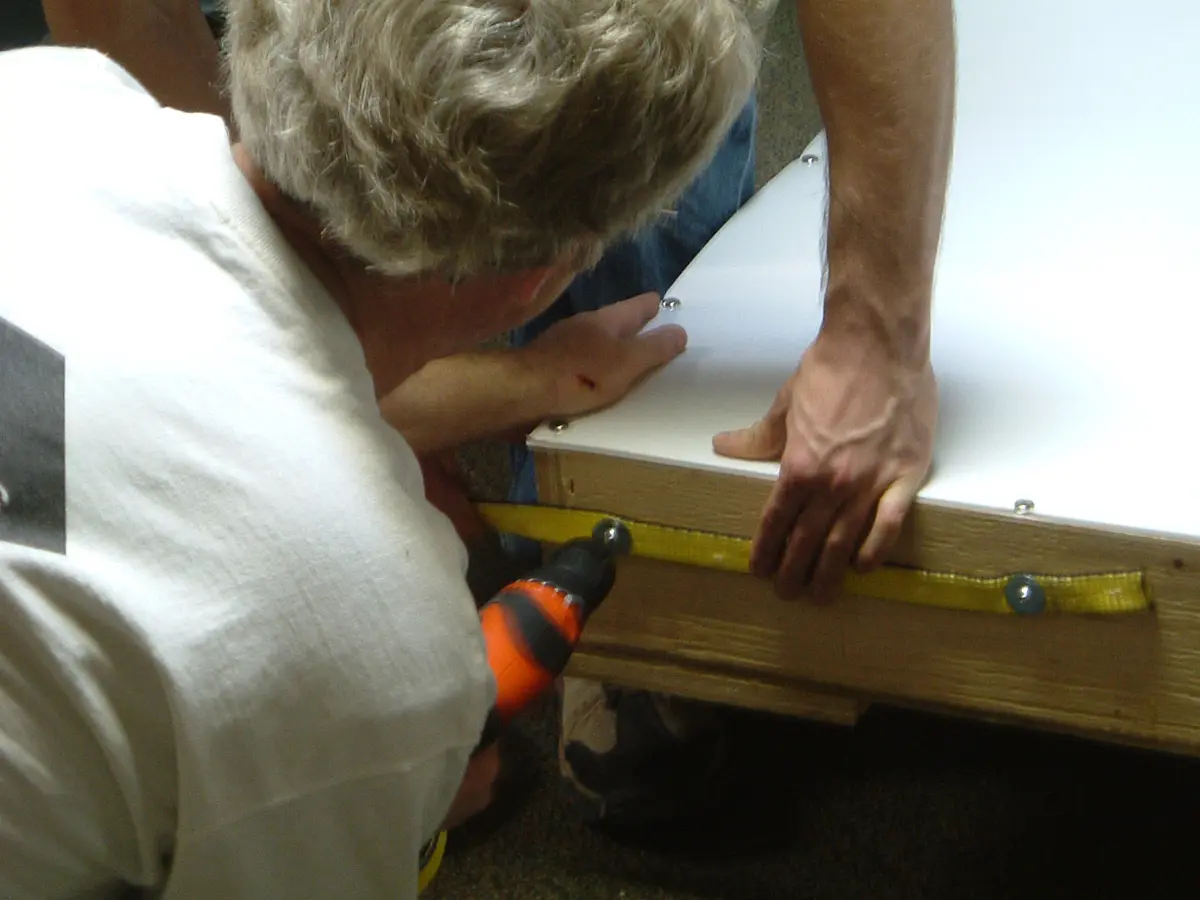
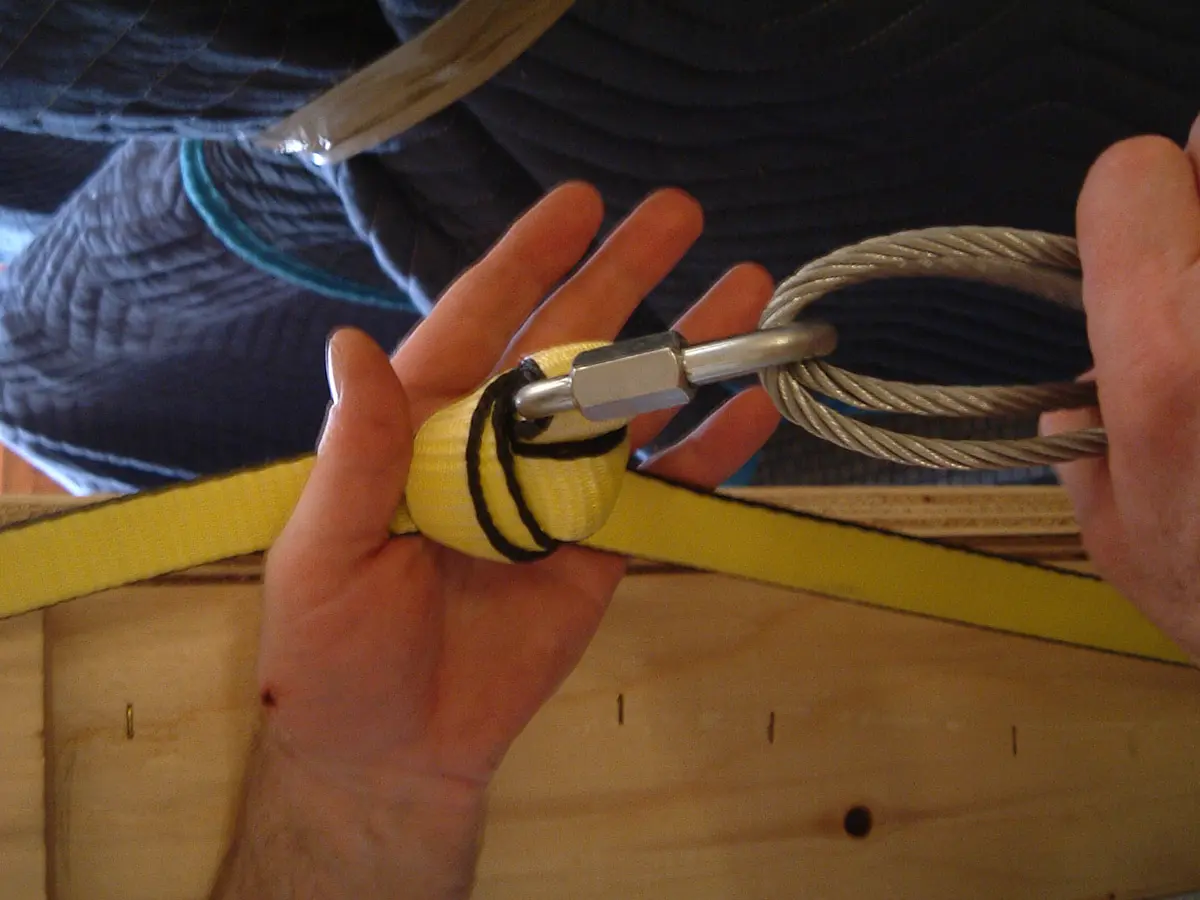
Lifting, lowering, leapfrogging and loading
After lifting the panorama trays above the banister, the moving team eased them into vertical position by raising the hoist chain. Controls on an electric switchboard lowered the vertical trays and the crew members took turns “leapfrogging” down the stairs to steady the load as it reached the ground floor. After exiting the front doors, the team loaded the prints and their frames onto the moving truck.
Home sweet home
The final steps in the panoramas’ journey took place the following day. When the photographs arrived at the Archives’ offsite storage, the movers brought the trays and frames into the loading dock so that the photos could be re-framed and placed inside the storage crate that would serve as their forever home. The team unwrapped the frames and laid them face-down on foam blocks before removing the metal plates securing the panoramas to their travel trays.
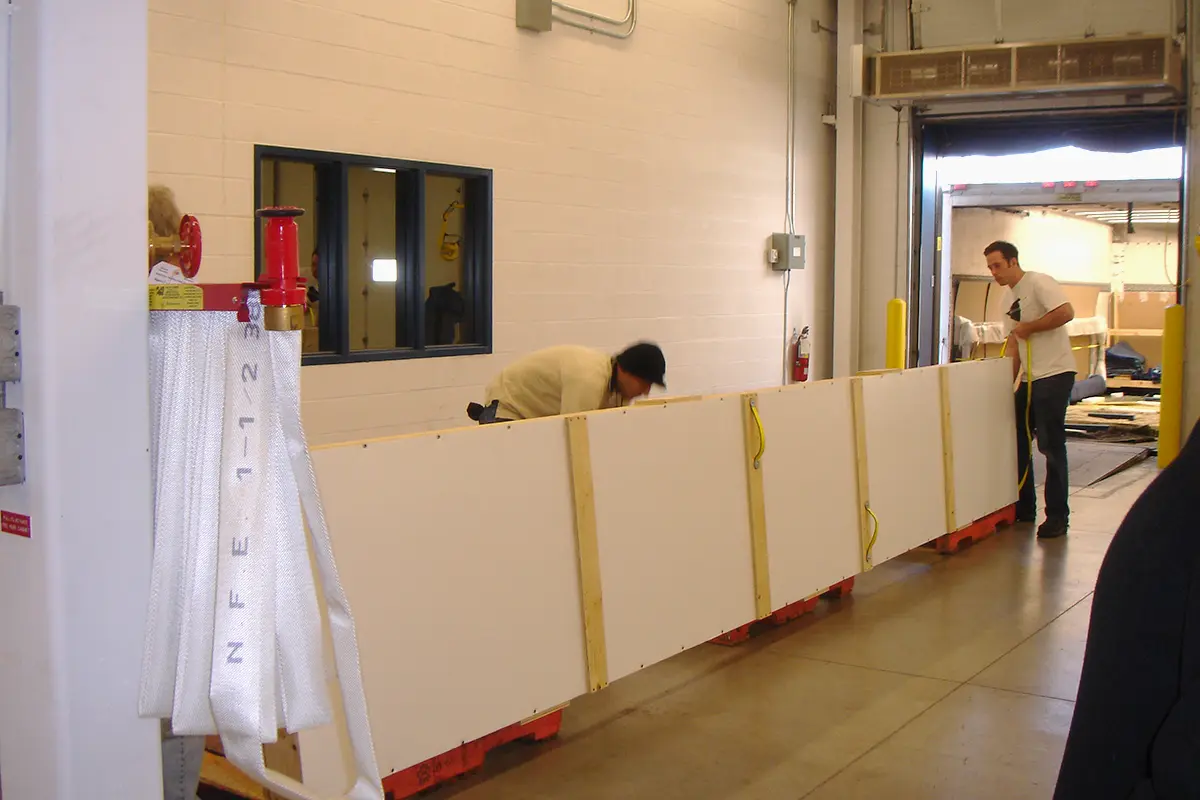
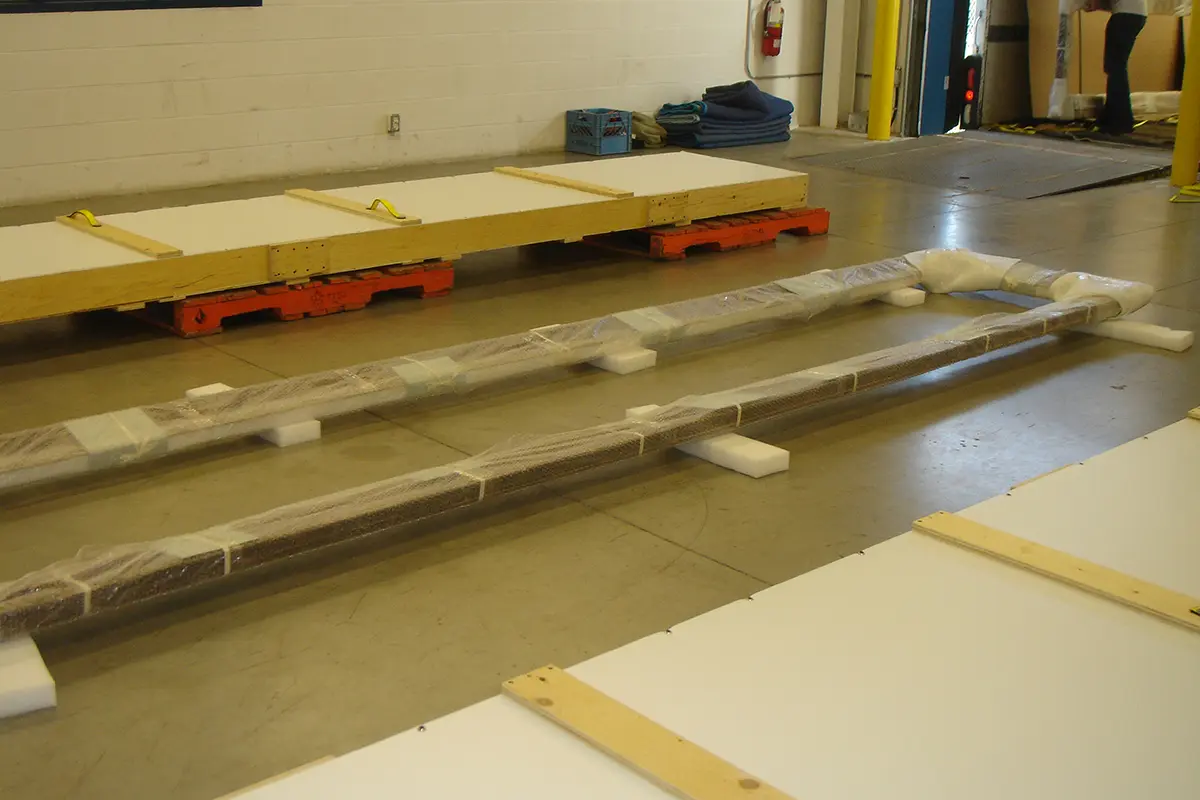
The art moving company designed the crate to house and protect both framed panoramas. Foam supports inside help to cushion each photograph, and a barrier film was added to protect the panoramas from the unfinished wood of the crate, which can emit harmful gases. The crate’s custom dolly provides support, protects against ground-level hazards and makes moving the photographs much easier.
Correctly positioning the panoramas inside their storage crate took many hands and considerable coordination. First, conservators put the summer panorama face-down into the crate. The winter panorama came next, placed back-to-back with the summer print so that it faced outward. Finally, the team pulled the protective liner over the winter photograph and sealed it with double-sided tape before screwing the crate lid into place.
Check out the silent footage below to witness the winter panorama’s placement inside its protective home.
The photographs are now stored safely for long-term preservation in our cool vault. The vault is kept at around 10 degrees Celsius and 40% relative humidity. These cool conditions are best for black-and-white prints like the Niagara Falls panoramas, ensuring that these incredible images last for many lifetimes to come.
Back to: Chapter 04
The repairs
Next up: Chapter 06
Enjoying the view
Looking for more records?
Search our collection
